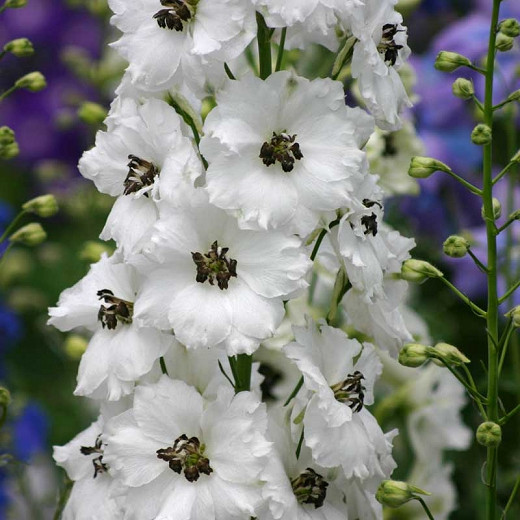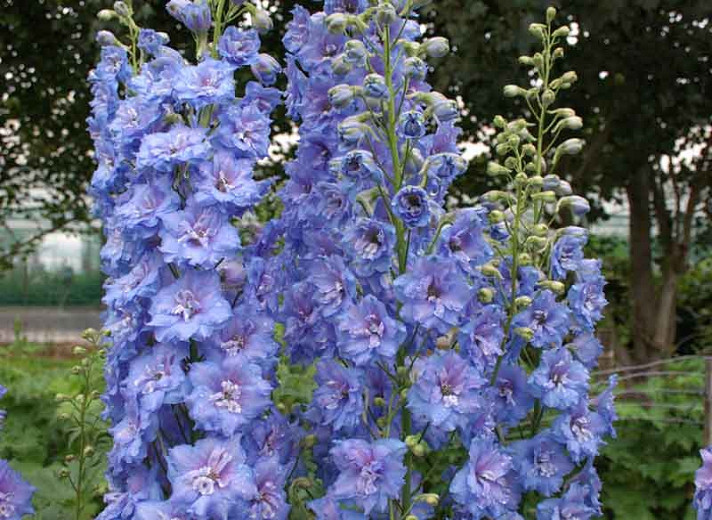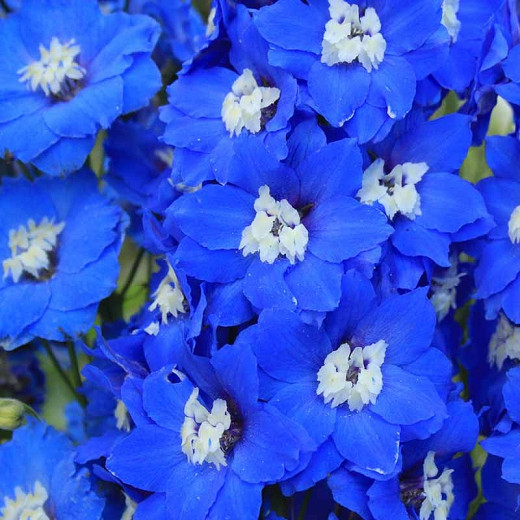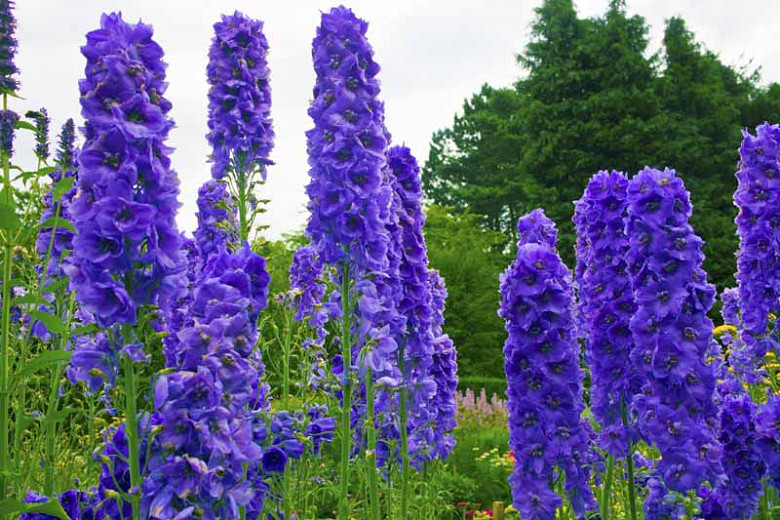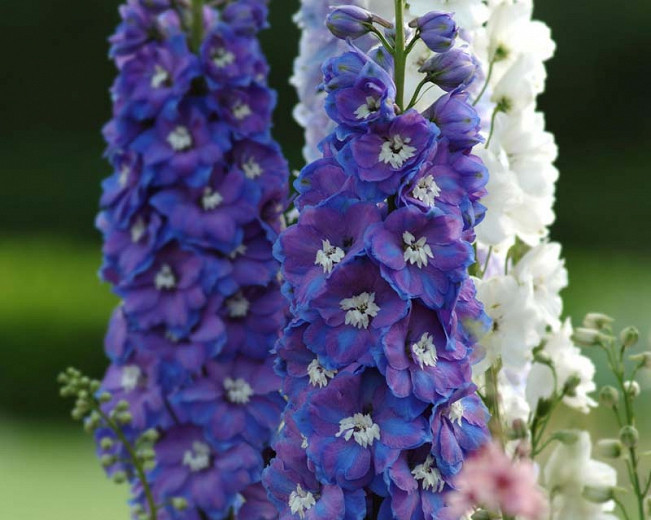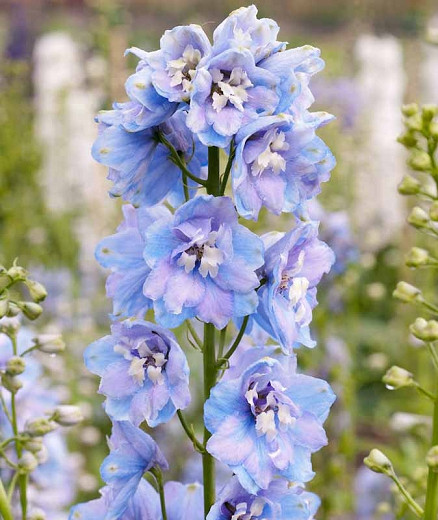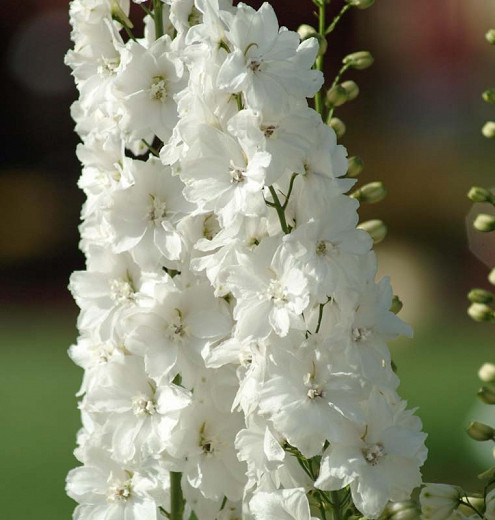Delphinium Galahad (Candle Larkspur)
Luminous, Delphinium ‘Galahad’ (Candle Larkspur) is a tall perennial with magnificent flower spikes, densely packed with glistening, pure white flowers. Blooming for weeks from early to midsummer, this Pacific hybrid is one of the latest of the series to flower.
Luminous, Delphinium 'Galahad' (Candle Larkspur) is a tall perennial with magnificent flower spikes, densely packed with glistening, pure white flowers. Blooming for weeks from early to midsummer, this Pacific hybrid is one of the latest of the series to flower. It adds a wonderful architectural presence in the garden and draws attention from quite a distance. Rising from a low mound of glossy, divided leaves, it has a neat compact habit. Splendid in cottage gardens.
- Grows up to 4-6 ft. tall (120-180 cm) and 18-24 in. wide (45-60 cm). May require staking
- Performs best in full sun in fertile, medium moisture, well-drained soils. Provide a sheltered location to protect your plants from strong winds.
- Apply a balanced liquid every couple of weeks in the growing season. For best flower spikes thin shoots when 3 in. high (7cm) to leave a minimum of 2-3 shoots on young plants and 5-7 shoots on established plants.
- Attractive to hummingbirds and butterflies, but ignored by deer and rabbits!
- A welcomed addition to beds and borders, cottage gardens, or city gardens. For the best visual impact, plant your Delphiniums in groups. Excellent as cut flowers, they deserve a spot in your cutting garden.
- Removing faded spikes at the base will encourage repeat blooming in the fall. Deadhead by cutting spent flower spikes back to small flowering side shoots. Cut down all growth to ground level after it has withered in autumn.
- Propagate by taking pencil-thick basal cuttings in early spring.
- Keep an eye out for slugs, snails, leaf miners, caterpillars, powdery mildew, and crown rot.
- All parts of the plant may cause severe discomfort if ingested.
- Toxic to dogs, toxic to cats, toxic to horses. Poisoning is rare in humans, however, seeds and plants if ingested can lead to severe illness, paralysis, and even death.
Requirements
| Hardiness | 3 – 8 |
|---|---|
| Heat Zones | 1 – 7 |
| Climate Zones | 1, 1A, 1B, 2, 2A, 2B, 3, 3A, 3B, 4, 5, 6, 7, 8, 9, 10, 14, 15, 16, 17, 18, 19, 20, 21, 22, 23, 24, A1, A2, A3 |
| Plant Type | Perennials |
| Plant Family | Delphinium |
| Exposure | Full Sun |
| Season of Interest | Summer (Early,Mid) |
| Height | 4' – 6' (120cm – 180cm) |
| Spread | 1' – 2' (30cm – 60cm) |
| Spacing | 18″ – 24″ (45cm – 60cm) |
| Water Needs | Average |
| Maintenance | Average |
| Soil Type | Chalk, Loam, Sand |
| Soil pH | Acid, Alkaline, Neutral |
| Soil Drainage | Moist but Well-Drained, Well-Drained |
| Characteristics | Cut Flowers, Showy |
| Tolerance | Deer, Rabbit |
| Attracts | Butterflies, Hummingbirds |
| Garden Uses | Beds and Borders |
| Garden Styles | City and Courtyard, Cutting Garden, Informal and Cottage |

